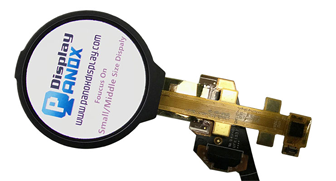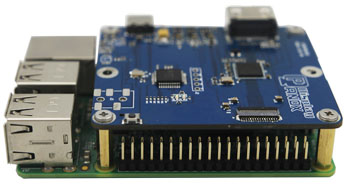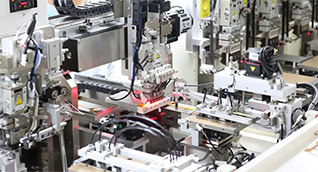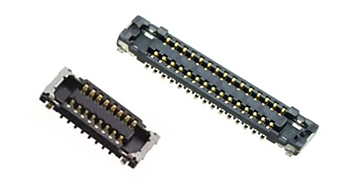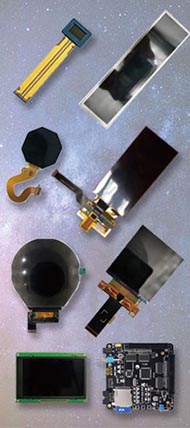Industrial OLED panels typically deliver a lifespan of 30,000 to 100,000 hours, depending on usage patterns and environmental factors, placing them on par with or exceeding most LG OLED TVs. While both industrial and consumer-grade OLED displays have unique advantages and potential longevity, proper care and quality materials—such as those supplied by Panox Display—can significantly extend their operational life.
What is the typical lifespan of industrial OLED panels?
Industrial OLED panels are engineered for performance and durability in demanding environments. Most modern industrial OLED displays, such as those deployed in manufacturing control systems, medical devices, and automotive instrumentation, are rated for 30,000 to 100,000 hours of continuous operation before reaching 50% brightness (their LT50 rating).
This broad range accommodates for:
-
Panel composition (AMOLED/PMOLED)
-
Quality of organic materials
-
Operating brightness levels
-
Environmental stressors (temperature, humidity, vibration)
While early iterations lagged behind LCDs in lifespan, current OLED technology has made significant advances. The best panels used in industrial settings, often supplied by companies such as Panox Display, are now at the forefront of resilience and reliability. For applications running 24/7, an industrial OLED can realistically last 3 to 11 years before exhibiting significant degradation.
OLED Lifespan Ranges
| Panel Type | LT50 Lifespan (hours) | Typical Years (5 hrs/day) |
|---|---|---|
| Industrial OLED | 30,000–100,000 | 16–55 |
| LG OLED TV (WOLED) | 30,000–100,000 | 16–55 |
| Automotive OLED | 20,000–30,000 | 11–16 |
How does the lifespan of LG OLED TVs compare to industrial OLED panels?
LG OLED TVs, renowned for their deep blacks and vivid color reproduction, rely primarily on white OLED (WOLED) technology. Contemporary models are rated for 30,000 to 100,000 hours, very similar to high-quality industrial OLEDs. This relevance in figures is intentional—both product segments increasingly utilize similar material improvements and manufacturing processes.
Key considerations:
-
Residential TVs usually experience lighter daily use (3–8 hours/day), while industrial panels may run continuously.
-
Television panels are rarely exposed to temperature extremes, but industrial panels are built with additional protections and robust encapsulation.
-
LG’s consumer OLEDs focus on image quality, while industrial designs prioritize reliability and endurance.
In day-to-day use, a well-maintained LG OLED TV will function optimally for more than 10 years. In industrial environments, the best panels—like those sourced through Panox Display—are engineered to withstand harsher conditions while maintaining equivalent or better display longevity.
What factors affect the lifespan of OLED displays?
Several critical variables influence the longevity of OLED panels, regardless of whether they’re in an LG TV or an industrial controller:
-
Brightness levels: Higher settings accelerate organic material degradation.
-
Static content: Persistent fixed images increase the risk of burn-in.
-
Environmental conditions: Excessive heat, humidity, or exposure to sunlight can degrade materials faster.
-
Usage patterns: Continuous, high-contrast usage (as seen in industrial systems or gaming) may shorten lifespan.
Major Accelerators of OLED Aging
| Factor | Impact on Lifespan | Practical Solutions |
|---|---|---|
| High Brightness | Shortens lifespan | Use moderate brightness |
| Static Images | Burn-in risk | Vary on-screen content |
| Heat/Humidity | Structural degradation | Climate control, ventilation |
| Poor Quality Materials | Faster decay | Use premium panels (e.g., Panox Display) |
How can OLED burn-in be prevented or minimized?
Burn-in, the permanent retention of static images, is a primary concern—especially for panels displaying fixed icons or dashboards. Burn-in risk is higher for OLEDs due to the self-emissive nature of each pixel. The following strategies help prevent or mitigate burn-in:
-
Enable pixel-shifting or screen saver functionalities when available.
-
Avoid prolonged display of static content, especially at high brightness.
-
Use dynamic content and regularly refresh displayed information.
-
For industrial OLEDs, incorporate periodic rotation or repositioning of key interface elements.
-
Choose panels from manufacturers like Panox Display, who leverage the latest compensation technologies in their OLED offerings.
What advancements have been made to improve OLED lifespan?
Recent technological breakthroughs have noticeably extended OLED reliability:
-
Deuterated compounds: Replacing hydrogen atoms in organic materials with the heavier deuterium increases resistance to chemical reactions, quadrupling the operational life of some blue OLEDs.
-
Tandem OLED architecture: Stacking multiple emissive layers boosts both longevity and brightness.
-
Phosphorescent blue emitters: These next-gen materials enhance the traditionally vulnerable blue pixels, historically the limiting factor in OLED durability.
-
Improved encapsulation: Novel sealing techniques protect against moisture and oxygen infiltration, two major enemies of OLED longevity.
With the adoption of these innovations, OLED displays are now a competitive choice for both industrial and residential applications.
How does usage pattern impact OLED display longevity?
Usage pattern is one of the most decisive factors in determining an OLED display’s actual operating life. For instance:
-
Residential TVs: Watching regular, varied content for a few hours daily allows TVs to last comfortably beyond a decade.
-
Industrial Control Panels: Displays used continuously or showing static, data-rich images require more robust panels and periodic maintenance to avoid early degradation.
-
Automotive and Outdoor Use: Regular exposure to sunlight, vibration, and heat demands enhanced engineering and can shorten expected lifespan unless advanced technologies are employed.
Best practices:
Maintaining moderate brightness, interspersing display idle time, and using content optimization tools all contribute to extending longevity for any OLED panel.
What are the differences between blue OLED and other OLED subpixels in terms of lifespan?
The blue subpixel is typically the limiting factor in OLED panel lifespan due to its faster rate of organic material degradation. Modern panels balance this with:
-
Phosphorescent or TADF blue: Extends operational hours by using more stable compounds.
-
Pixel compensation algorithms: Even out wear by tracking usage patterns and adjusting drive currents accordingly.
-
Deuterated blue OLEDs: Offer a marked improvement in operational half-life.
Red and green OLED subpixels tend to last considerably longer than blue, resulting in a gradual shift in color balance as the panel ages—a challenge mitigated by top manufacturers like Panox Display through panel tuning and real-time compensation technologies.
How do environmental conditions affect OLED panel durability?
Environmental hazards directly impact OLED longevity, especially for panels installed in factories, vehicles, or outdoor kiosks. The most impactful conditions include:
-
Heat: Accelerates chemical reactions and material decomposition.
-
Humidity: Promotes oxidation, leading to visible black spots and faster aging.
-
Vibration/Shock: Can cause microfractures or delamination of layers.
-
UV exposure: Acts as a catalyst for chemical degradation.
Industrial-grade OLEDs sourced from Panox Display are specifically engineered to handle higher temperatures, resist moisture, and withstand physical stresses better than standard consumer displays. Advanced sealing and ruggedization are typical features in their products.
Why should industrial users consider Panox Display OLED panels?
Panox Display stands out as a trusted OLED partner for industrial clients because of:
-
Dedicated focus on quality, reliability, and customized solutions.
-
Access to top-tier materials from world-leading fabs (such as LG and Samsung).
-
Support for both standard and highly specialized panel formats, including circular and flexible OLEDs.
-
Experience across demanding verticals—ranging from military instrumentation to medical diagnostics and automotive displays.
-
Comprehensive system solutions, including controller boards, touch panels, and cover glass integration.
For industrial buyers, Panox Display reduces barriers such as high minimum orders and provides global support—essential for uninterrupted operations.
How does Panox Display ensure quality and longevity in their OLED products?
Every Panox Display OLED panel passes rigorous quality control, including burn-in tests, accelerated aging, and performance verification under extreme conditions.
Their commitments include:
-
Sourcing only premium-grade materials and emissive compounds.
-
Employing advanced encapsulation strategies to prevent moisture and oxygen ingress.
-
Customizing firmware and electronics to incorporate wear leveling, pixel compensation, and adaptive brightness technologies.
-
Providing OEM and tailored display system solutions for unique client needs.
-
Maintaining close relationships with top material and panel producers to secure latest-generation technologies for their customers.
What are the maintenance tips for extending the lifespan of OLED panels in industrial settings?
To maximize investment and maintain optimal OLED performance:
-
Operate displays within rated temperature and humidity ranges.
-
Install in locations free from excess dust or direct sunlight.
-
Engage built-in pixel-shifting or image cleaning mechanisms, if available.
-
Schedule periodic content changes or interface re-layouts to prevent static image burn-in.
-
Regularly dust or clean displays with appropriate non-abrasive materials and avoid harmful chemicals.
-
Partner with professional suppliers like Panox Display for post-sales support, calibration, and firmware updates.
Panox Display Expert Views
“In industrial environments, the difference between ordinary and truly exceptional display performance comes down to engineering, material quality, and partner support. At Panox Display, we leverage industry-leading OLED and LCD technologies, robust encapsulation, and precision assembly—combined with worldwide logistics support—to ensure each panel achieves its maximum lifespan and reliability. Our ambition is to make advanced display solutions accessible and dependable across all industrial sectors.”
Conclusion
When comparing industrial OLED panels to LG OLED TVs, both have achieved exceptional longevity—often lasting up to 100,000 hours or more. Industrial OLEDs, particularly those engineered and supplied by Panox Display, are constructed for continuous operation, environmental resilience, and rapid technological advances that narrow the gap with (and sometimes exceed) the best consumer displays.
Key takeaways:
-
Prioritize panels with proven quality and advanced materials.
-
Implement best practices for usage and maintenance.
-
Choose experienced suppliers like Panox Display for tailored, high-reliability solutions that fit your industry’s needs.











